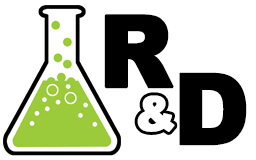Career mode/ko
커리어 방식--버전 0.22부터 가능--은 계속 개발 중이며, 샌드박스방식에 대한 대체제 역할을 해준다. 커리어 방식의 핵심은 과학기술 개발(science activities)이다. 0.24에서는 두번째 형태의 커리어 방식이 추가되었다 (계약(contract), 운영자금(funds), 명성(reputation)이 추가됨). 0.24 이전에는 사이언스 방식이 커리어 방식처럼 운영되었다.
개요
The career game mode has an open Research and Development facility. The player has to conceive and do missions and perform scientific experiments. Those yield Science points which can be used in the Research and Development facility where new parts can be “researched”, which is immediately unlocking all parts of that technology tree node. Because the player can use only parts which are already unlocked, every game starts with the Start node unlocked.
Since version 0.24 it adds monetary costs for each part used and contracts given by agencies to earn money to fund future missions of the space program. The Mission Control building is used to manage the available, active and finished contracts. Additionally reputation as another measure of success is added.[1]
첫번째 임무
The easiest first mission is simply “launching” the Command Pod Mk1. This is similar to the earliest Apollo missions, though there was the fatal Apollo 1 fire.
The first rockets could possibly go anywhere in the vicinity of Kerbin, especially with techniques like explosive decoupling. But most early rockets will barely, if even, exit the atmosphere. However, landing in a new biome means a fresh opportunity for science activities.
It's easy to unlock the first four nodes of the tech tree by performing science activities around Kerbal Space Center, even with only Start node parts. KSC comprises three special surface-only biomes. Regular biomes outside these special biome locations include opportunities for science while the vessel is flying or in space.
There are three science activities that can be done from the start:
Crew and EVA Reports only yield science points the first time performed in a situation and biome. Surface Samples can be repeated, but with diminishing results each time up to six times. So, visiting the same biome multiple times without having new science modules on board isn't very productive.
과학 모듈
To accelerate the amount of science returned, it's wise to unlock nodes offering new science modules. With these it is possible to gain even more science to compensate for the fact that technology tree nodes become increasingly expensive.
진행 중반
Later nodes will be difficult at best without visiting other celestial bodies. Kerbin's moons Mun and Minmus are especially primary targets for the middle game as they can be reached quickly and easily. Both also feature biomes, greatly increasing the amount of science that can be done.
It will be important to unlock various batteries and solar power generators for transmitting data until only retrieval to Kerbin will yield Science points. Missions will generally be larger and demand greater mastery of the maneuver node system in Map view.
진행 후반
With good strategy and diligent "mining" to exhaust biome+situation combinations, it's possible to finish the tech tree with just Kerbin and its moons; but it's often faster and more exciting to figure out how to intercept with other planets. Eve and Duna are certainly reachable with conventional rockets. For manned exploration of distant planets, and the high multipliers for doing any Science on them, acquiring the LV-N Atomic Rocket Motor will be very helpful.
이어서 볼 글타래
참조
- ↑ “First Contract Playthrough” by Miguel (Maxmaps) uploaded on the official Kerbal Space Program channel released on the 11 July.
